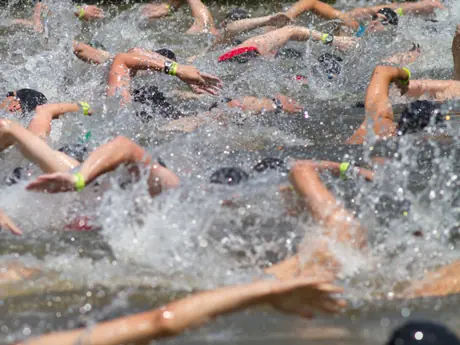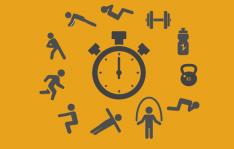
Recently there have been several blogs and media columns revealing concerns that triathlon is a dangerous sport. The concerns come primarily from an uptick in deaths at triathlons, with the swim carrying the highest concern.
USA Triathlon, the governing body for the sport of triathlon, took the concerns seriously and conducted an in-depth study of deaths related to the sport. Some of the key findings in the report include:
- The absolute number of fatalities has increased with the absolute increase in participation.
- Fatality rate does not appear to be related to the length of the race, the type of swim venue (with the exception that no fatalities occurred in a swimming pool) or the method of swim start (mass, wave or time trial).
- The victims appear to have included athletes from a broad range of triathlon experience, i.e. fatalities were not confirmed to inexperienced triathletes.
- There is no clear evidence that swimming ability, typical drowning, anxiety/panic, wetsuit related factors, lack of a warm-up, lack of medical exam or unusual medical problems--e.g., stroke, seizure, syncope, swimming-induced pulmonary edema (SIPE), pulmonary embolism, or bodily trauma -- were responsible for deaths during the swim.
- There is shared responsibility for safety. Athletes, event organizers and USA Triathlon each have a role in sport safety.
More: How to Train for a Triathlon (From Scratch)
An athlete recently wrote to me and asked a direct question, "Do you think triathlon is a dangerous sport?"
Personally, I do not consider triathlon a particularly dangerous sport—per se. The sport, as with many others, does come with some risk; but I believe the risks can be minimized. Certainly race directors can take steps to minimize risk and the good ones are taking steps to do just that.
Though the study did not directly link deaths to many of the items below, taking these steps can likely improve your probability of success:
More: Beginner's Triathlon Gear List
1. Be in good physical condition and have confirmation from your doctor. If you have any family history of heart issues, be sure to have those checked out by a doctor. If you have any concerns with chest pains or abnormal heart beats, talk to your doctor. At minimum, you should have had a recent physical exam prior to beginning your triathlon training.
2. Train for the duration of the event. Appropriate training prepares both your body and your mind. If you are well-trained, you can go into the event confident in your abilities.
3. Reduce race anxiety. Work on mental skills and solutions to reduce race day anxiety.
4. If the water is predicted to be colder than 78 degrees, consider purchasing a wetsuit. A wetsuit is a good idea particularly if you easily get cold. That written, a wetsuit will not compensate for a lack of baseline health or training.
- 1
- of
- 2
About the Author










Discuss This Article